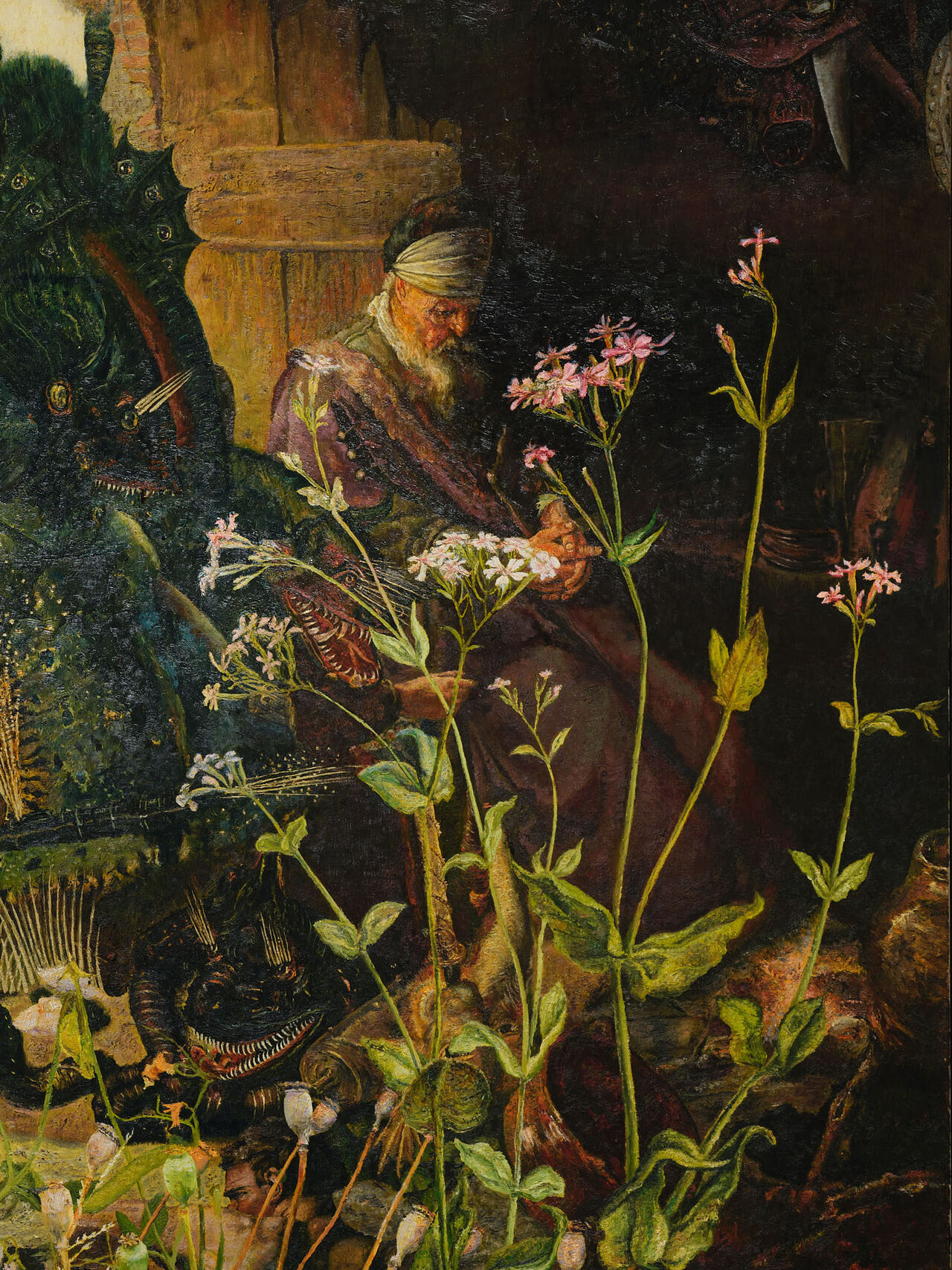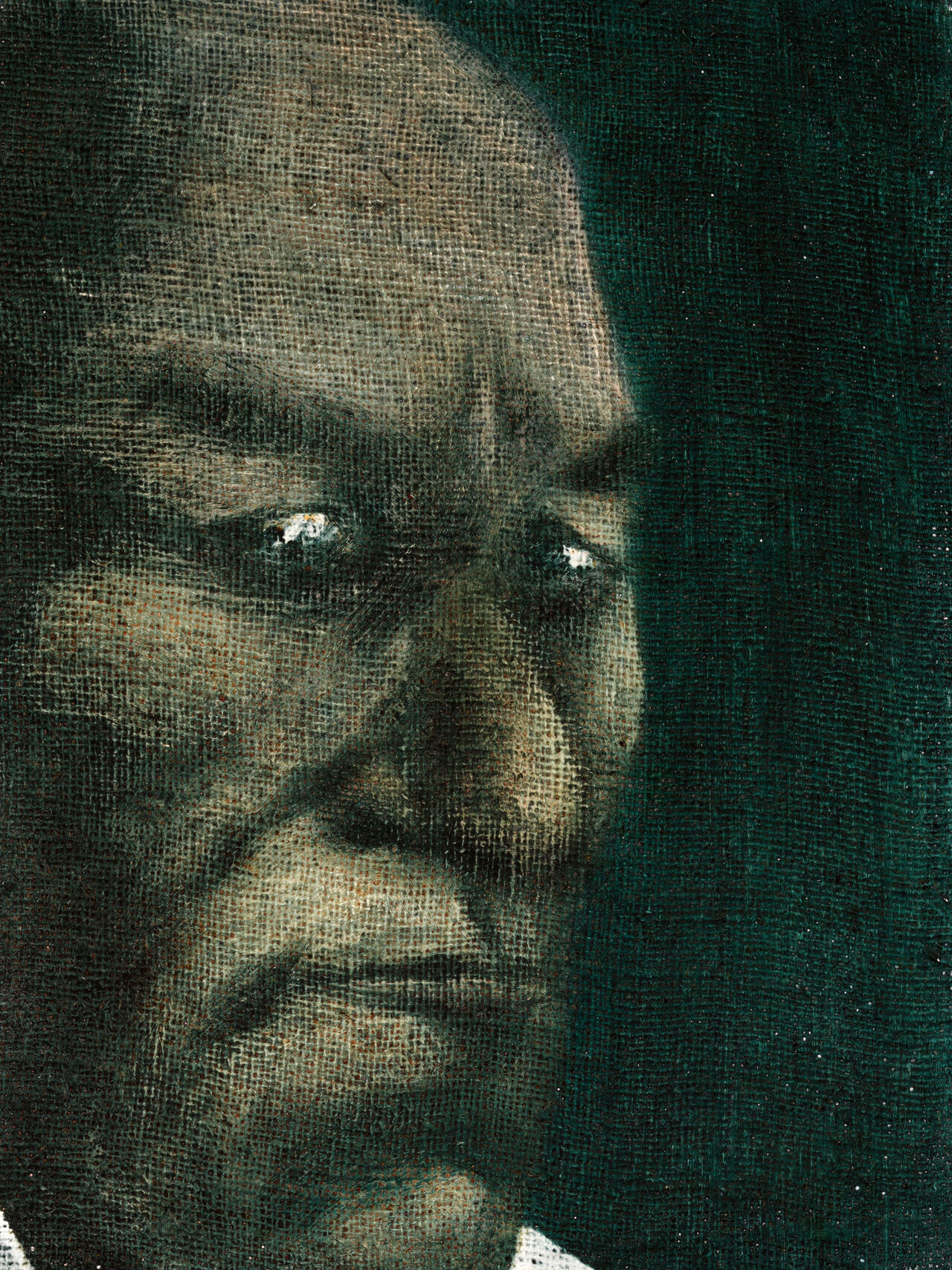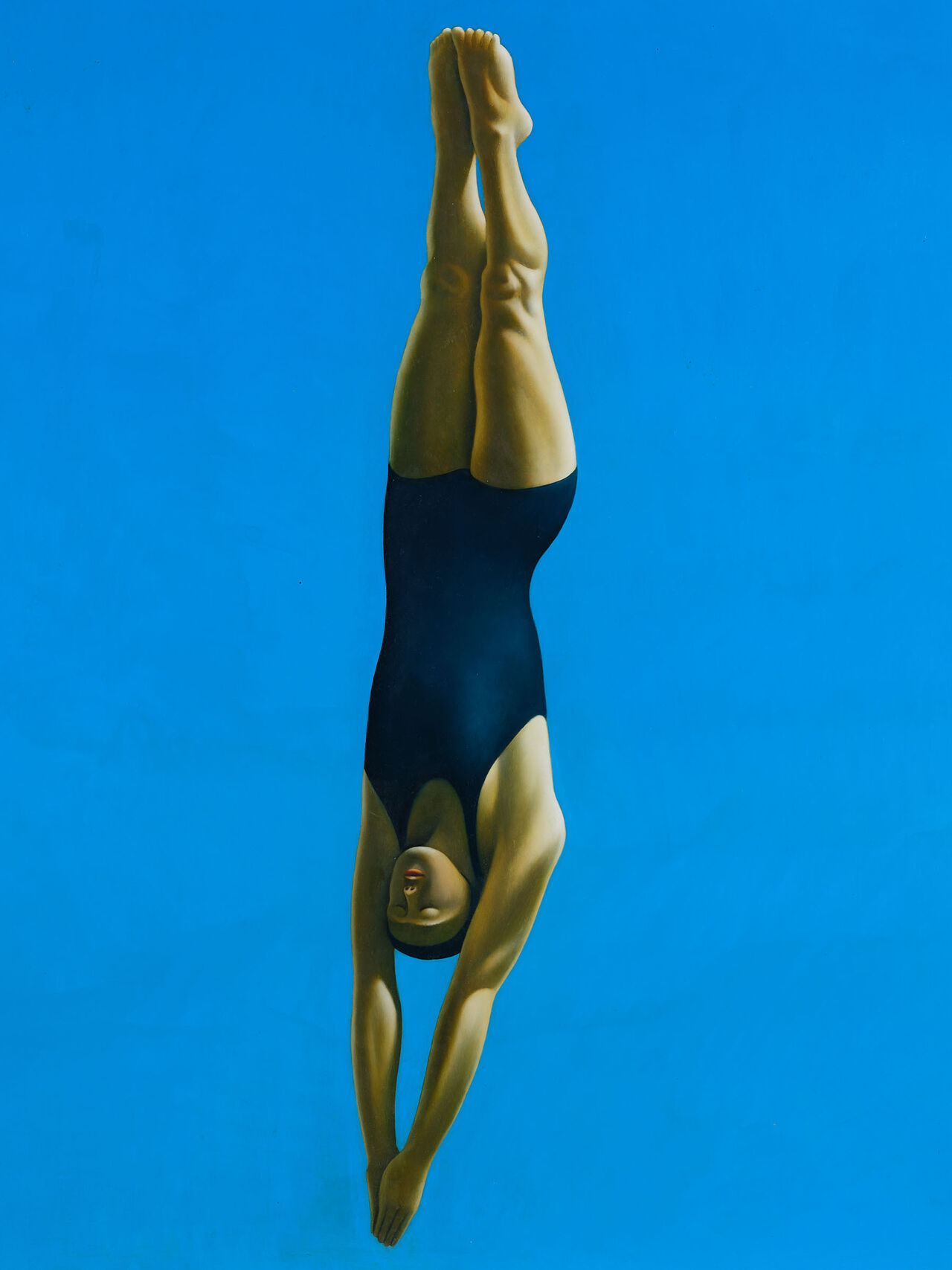Milan Mrkusich 'Achromatic with Red'
Laurence Simmons
Essays
Posted on 5 August 2025
The achromatic of the painting’s title refers to something that is without colour, or lacking in chromatic colouration. Black has little or no hue since it absorbs almost all incident light. White, too, is achromatic because it lacks hue and reflects light. Grey since it is a mixture of white and black must also be considered achromatic. Nevertheless, grey is mercurial, always ambiguous, provocative and unresolved; it embraces both truth and deception.
So, Mrkusich’s title tells us all: everything is achromatic except the red square on the right. Why, the painting seems to ask, does black have such an ambiguous power? Is it because here it is not a background (not a ‘blackboard’ on which to paint). There is a profound sense of weight that the black of Achromatic with Red carries. Perhaps ‘weight’ is not quite the right word? Energy might be closer and what anchors the energy in Achromatic with Red is the structure, the point chosen for the line to cross the black expanse and its intensity. The red and grey line does not pull the eye toward it with any definite drive, nor does it simply sit on the black, and yet it matters. It ensures that the canvas is not an amorphous space for the composition is structured; it now has its own rules. But these rules are not restrictive, they don’t confer any certainty. The line that runs across the painting might offer us, for a moment, a horizon, but it is not the horizon of a landscape, it is more like the horizon of a philosophical concept. “Colours spur us to philosophise,” Wittgenstein once said.
A better way of describing the line of red transitioning to greys is that it is an enabling presence; it is there to help us understand the psychological intensity of the black; it was contrived by the artist to do this. Art historian Peter Leech has noted how Mrkusich’s use of these ‘armatures’ pull “the paintings this way and that, bending and wrenching at the deeper chromatic world behind the flatness and creating an incoherent architecture of painted surface.” We are left with an arrangement held together but in imminent danger of dissolution. It is in this sense that the line ‘cuts across’ the painting.
The black looks very solid, it has an obdurate density, and the strip seems alive, though there might be a battle between the black as implacable mass, something that resists, and the tentative, delicate effort of the line in all its spareness, just greys and red. At moments the line seems to hover in front of your eye, uncertain yet insistent. At others, it is recalcitrant, it won’t respond to an easy viewing. That skirmish is foregrounded in the subtle modulation of dark grey in the large rectangle on our lower left, this is some way the true ‘battleground’ of the painting. It lies between the obdurate black and the lighter hues of grey. It takes a while to notice it and reproduction hardly picks it up.

There is no point in saying that the black of Achromatic with Red suggests this or that (implacable darkness, or unrelenting night), it is black paint. It represents blackness. What does the red do against the black? It may look like a colour but it seems more like a feeling, an affect. Notice how the grey underlays it. It may have all sorts of resonances and implications (passion and desire but also danger and aggression) but it does not represent anything in nature. It gleams and shows up the blackness around it but does not redeem it. It is the chroma that ‘tunes’ the achroma. These works of 1985 were some of the most intellectually demanding that Mrkusich produced. Some art enfolds us in a sea of emotion and some snaps us to intellectual attention. Achromatic with Red does both at once, if we let it.


